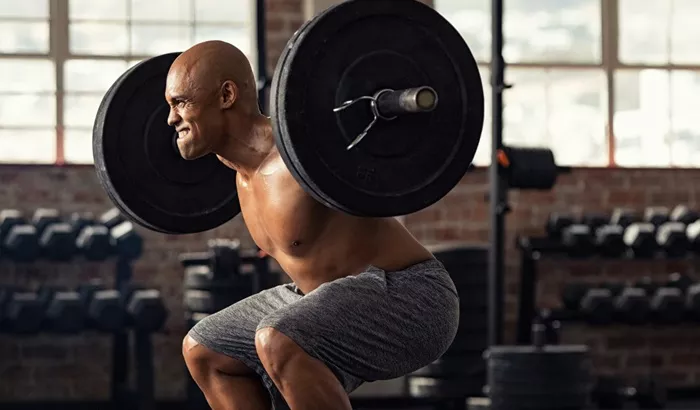As a personal trainer with over 30 years of experience, squats were second nature to me. On October 21, 2020, I was back at the gym in Chattanooga, Tennessee, working to rebuild my career after semi-retiring in Costa Rica for two years. It was a cold day, I was running late, and, like many others, I rushed through my warm-up.
I had already lifted 135 pounds, then 225 pounds, and was preparing for 275 pounds. As I descended into my squat, I came back up, adjusted my back for the next rep—and then everything went black.
When I regained consciousness, I was lying on the gym floor. My spotter stood nearby, visibly shaken. I glanced at my legs and saw something was wrong—my lower legs weren’t aligned. My first instinct was to wiggle my toes. I could still do that. But when I looked at my thighs, I saw two large bulges about 10 inches above my knees. That’s when I realized: I had torn all three quadriceps muscles in both legs off the bone. This injury, known as a bilateral quadriceps tendon rupture, left me unable to stand or walk without surgery.
The surgeon had to unroll the muscles and reattach them to the bones. Just picturing the procedure still gives me chills.
A Difficult Recovery
Recovery was grueling. My legs were braced from my hips to ankles to prevent my knees from bending and disrupting the stitches. I was bedridden for four weeks, unable to remove the braces. Sleeping in them was excruciating—I wouldn’t wish that experience on anyone.
During this time, a close friend graciously offered me a bedroom in her home. I needed help with the most basic tasks, from bathing to getting to the bathroom. I couldn’t even get out of bed without assistance. For eight weeks, a washcloth bath was the best I could manage.
After that, I spent four to six weeks in a wheelchair. This is when I began returning to work, although my client load was light as I was just restarting my business. But my friends and coworkers helped make it possible. They would pick me up at 5 a.m., drive me to the gym, and my colleagues would wheel me from station to station while I coached clients.
It was mentally exhausting. For the first time, I needed help—something I was not used to, as I had always been the one providing support.
Rebuilding My Strength and Confidence
Once I graduated from the wheelchair, I began physical therapy. At first, it was all about range-of-motion exercises, working to bend my knees again. I walked stiffly, like Frankenstein, relying on braces for support. Slowly, I moved into muscular rehabilitation and impact therapy. My workout partners would assist me in machines for upper-body exercises, lifting me in and out of the equipment after each set.
The most challenging part wasn’t the physical pain—it was relearning how to walk. I had to rebuild the mind-muscle connection, step by step. I spent hours on the treadmill, focusing on every motion: heel down, knee bent, weight shifted, repeat. Each movement required intense concentration.
Gradually, my coordination improved, and so did my confidence. I began walking on flat surfaces without braces, then tackled hills. Eventually, I returned to leg training with light weights and low reps to reacquaint my muscles with impact. This process took an entire year.
Returning to Squats
The surgeon had told me the chances of ever doing free-weight squats again were slim. But I wasn’t ready to accept that. I began sending him videos of me squatting the bar, then 95 pounds, then 135, and finally 225 pounds. Sixteen months after my injury, I finally felt normal walking again.
While I still struggle with stairs and hills, I take my time and remain grateful for every step. This experience has humbled me and given me a small taste of what it’s like to lose something as simple as walking—and fight to regain it.
I’ve learned that every day is a gift. And I will always carry that lesson with me, especially when life gets tough.
Related Topics:
The Truth Behind Six-Pack Abs: What Really Works
Lose Weight and Gain Lean Muscle at the Same Time With This Effective Strategy


